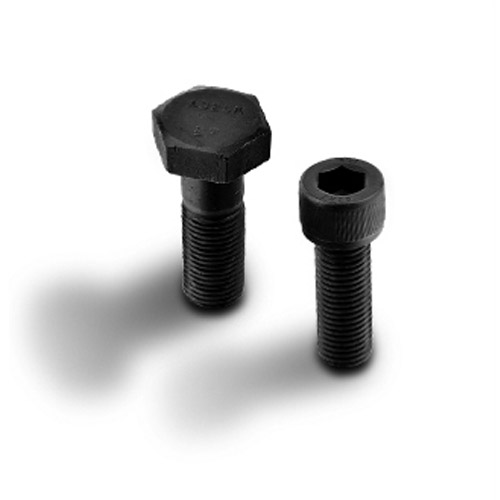

Exploring B16 Stud Bolts for Enhanced Performance and Reliability in Engineering Applications
Oct . 11, 2024 20:01 Back to list
Exploring B16 Stud Bolts for Enhanced Performance and Reliability in Engineering Applications
Understanding B16 Stud Bolts A Comprehensive Overview
B16 stud bolts are critical components widely used in various industries, particularly in construction, manufacturing, and engineering. The designation B16 refers to an ASTM (American Society for Testing and Materials) specification that outlines the requirements for the design and manufacturing of stud bolts. These bolts are essential for ensuring the stability and integrity of structures and machinery.
What are B16 Stud Bolts?
In essence, a stud bolt is a type of fastener that features a threaded shaft, allowing it to be securely fastened using nuts on either end. B16 stud bolts are specifically designed to meet the rigorous standards of ANSI/ASTM B16, which encompasses the properties of materials, dimensions, and testing methods. The standard primarily focuses on bolting products used in various piping systems and other high-pressure applications.
Material Composition and Specifications
The most common materials used for B16 stud bolts include carbon steel, stainless steel, and alloy steel, each of which offers distinct advantages depending on the application context. For example, carbon steel is favored for its strength and cost-effectiveness, while stainless steel is preferred for environments requiring resistance to corrosion, such as marine or chemical processing industries.
The specifications outlined by ASTM B16 include aspects such as tensile strength, yield strength, and elongation. Generally, B16 stud bolts will have a minimum yield strength of 35,000 psi, making them highly durable for high-stress applications. Additionally, they may undergo various treatments, such as hot-dip galvanizing or plating, to enhance their resistance to corrosion and environmental wear.
Applications of B16 Stud Bolts
b16 stud bolts

B16 stud bolts find widespread use in a range of applications. In the construction industry, they are essential for securing structural components, such as beams and columns, ensuring buildings can withstand various forces, including wind and seismic activity. In the oil and gas sector, B16 stud bolts are often used in flanged joints, pipelines, and pressure vessels, where they help create durable, leak-proof seals.
Moreover, manufacturing processes that involve heavy machinery frequently utilize B16 stud bolts to hold equipment securely together, preventing mechanical failure during operation. The automotive industry also relies on these fasteners in assembling engines and critical components, where precision and reliability are paramount.
Installation and Maintenance
The installation of B16 stud bolts requires a systematic approach to ensure optimal performance. It is essential to follow manufacturer guidelines and industry standards when selecting the appropriate size, material, and grade of stud bolt for a specific application. Furthermore, proper torque specifications must be adhered to during installation to prevent over-tightening or under-tightening, which could compromise the integrity of the joint.
Regular maintenance checks should also be conducted to ensure the stud bolts remain in good condition. Inspecting for signs of corrosion, wear, or damage will help identify potential issues before they lead to failures. If any problems are detected, timely replacement or repair of the studs should be undertaken to maintain safety and functionality.
Conclusion
In summary, B16 stud bolts are indispensable fasteners in various industries, emphasizing the importance of quality and reliability in engineering. Adhering to the specifications outlined in the ASTM B16 standard ensures that these bolts are capable of withstanding the stresses of their intended applications. As industries evolve and technology progresses, the development of advanced materials and innovative design techniques will likely enhance the effectiveness of B16 stud bolts, further solidifying their role in the built environment and beyond.
Understanding the significance and proper use of B16 stud bolts not only supports the integrity of structures and machinery but also fosters advancements in safety and engineering practices, ultimately contributing to more robust and resilient infrastructures.
Latest news
-
High-Strength Hot-Dip Galvanized Bolts-Hebei Longze|Corrosion Resistance&High Strength
NewsJul.30,2025
-
Hot Dip Galvanized Bolts-Hebei Longze|Corrosion Resistance&High Strength
NewsJul.30,2025
-
Hot Dip Galvanized Bolts - Hebei Longze | Corrosion Resistance, High Strength
NewsJul.30,2025
-
High-Strength Hot Dip Galvanized Bolts-Hebei Longze|Corrosion Resistance, Grade 8.8
NewsJul.30,2025
-
Hot Dip Galvanized Bolts-Hebei Longze|Corrosion Resistance,High Strength
NewsJul.29,2025
-
High-Strength Hot Dip Galvanized Bolts - Hebei Longze Metal Products Manufacturing Co., Ltd.|corrosion resistance&high strength
NewsJul.29,2025

